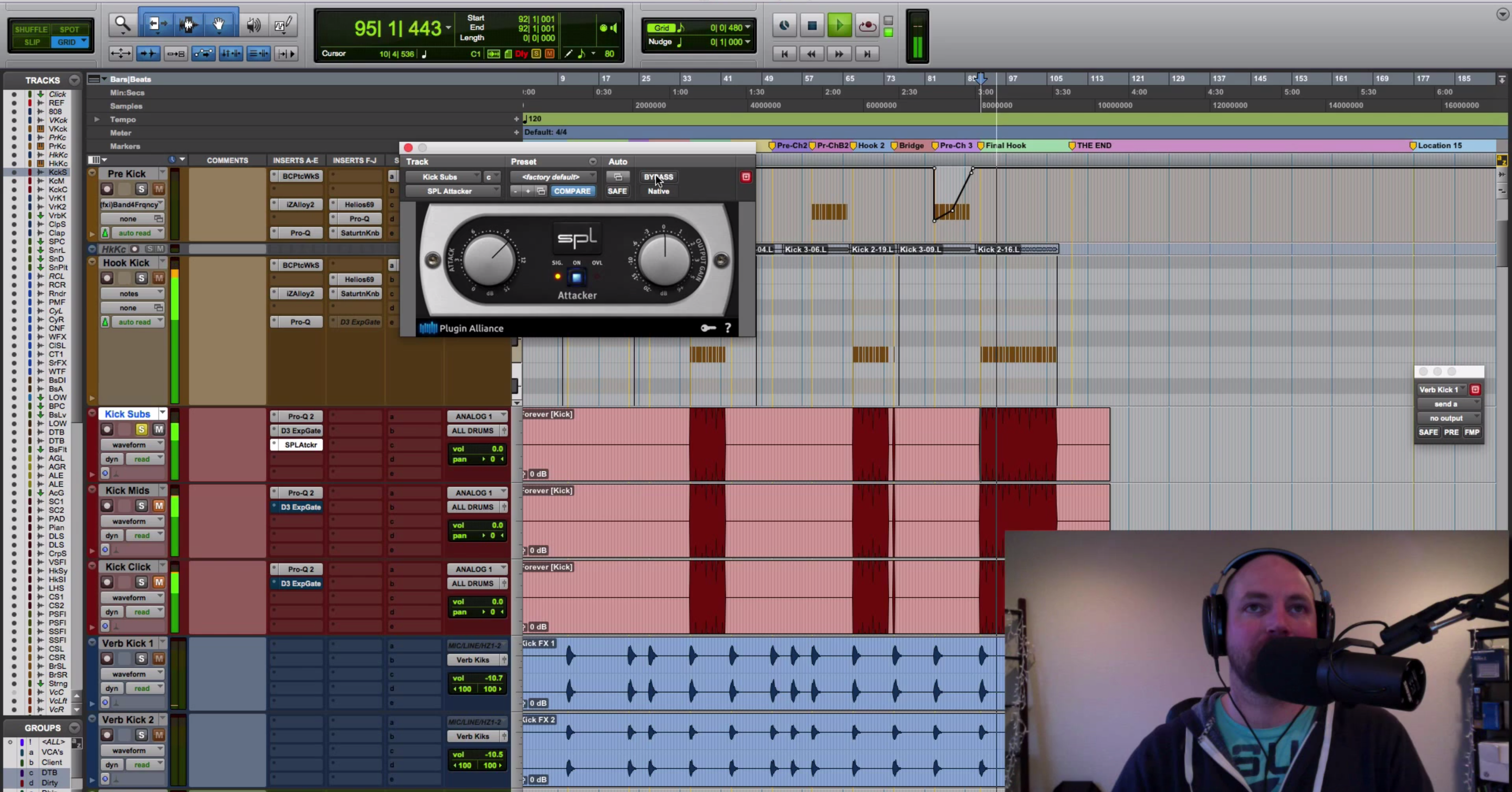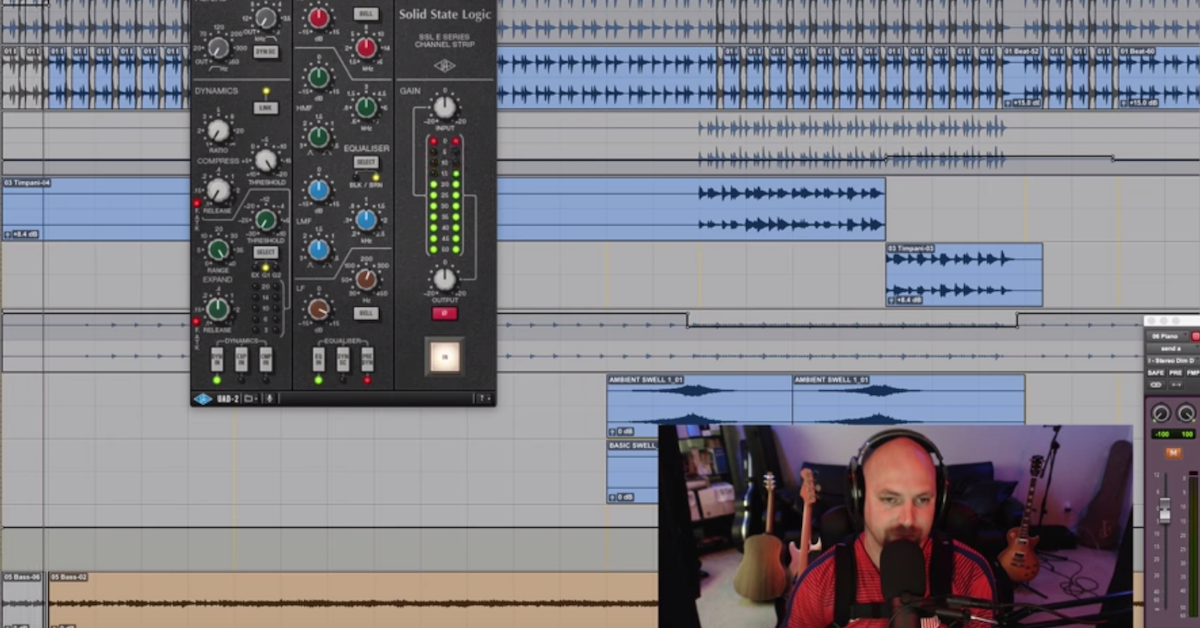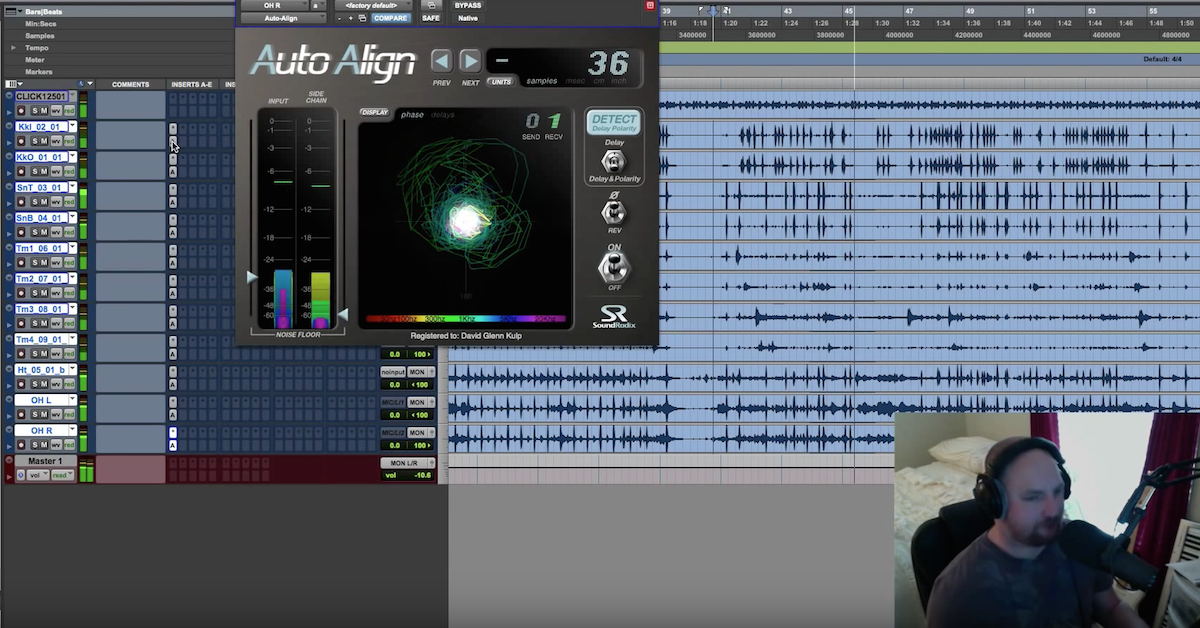How to Align Kick Drum Phase in a Hip-Hop Mix
[kick]
So it’s a four on the floor kick type of song. It’s a very hard kick. It doesn’t have a lot of low frequency information. Kind of more like almost a dance kick. That’s cool. I wanted a little more weight to it though. So what I did was I went through all of my samples, and I found this sound.
[low kick]
Which has a lot more sub, a lot more body to it. Here’s the original again.
[kick, then low kick]
So obviously, I can’t just use that sound, or we don’t have any of that nice top end that the original has, but together…
[kicks]
They cancel out, and we end up getting no middle, no lower mids, no upper bass, we end up getting just the click and super low subs.
[kicks]
So you can hear how they’re just conflicting, and if you actually go over and zoom in on the waveforms, you can see how the attack is in phase a little bit, and then by this second note, it starts to go out of phase, and then it’s completely out of phase 180 degrees, and stays that way for most of the sound. Then it kind of starts to get back in a little bit in the tail.
But yeah, they’re definitely — they’re not together, and we can’t just flip the polarity 180, because they still won’t be together. So I ended up using the Little Labs IBP Phase Tool, and this is a great, great plugin. I used to have the hardware version of this. It worked just the same way. It’s really good for aligning things phase wise that are out, but not 180 out, they’re kind of in between. This is a great use of a phase knob. You can just start turning until you find that sweet spot.
Check it out. I’ll play them how their phase was originally. The phase relationship. Then I’ll bypass this and you can hear how the frequencies change.
[before and after phase alignment]
So you can hear the mid-range just comes right back and becomes evident again. It’s not cancelled out. Let me show you this. I’ll kind of adjust it live. On this plugin, you have a delay section, if you want to delay the track, which we didn’t need to deal with on this particular scenario, but then you have a phase invert. So that’s 180. Just like any polarity button. Then you have a phase adjust for this knob, so this knob can be zero to 90 degrees, or if you hit this button, it can be zero to 180 degrees.
So if you have that on 180, and you’ve hit the phase invert, and you go all the way to the right, you’re all the way back. You’re at 360. So that’s how that works. So we’re inverting 180. We have the phase adjust at 180, and then our knob is turned not quite all the way back to the 360, but it’s close. I don’t know the numbers here, but it’s probably around 300 or something like that.
So check this out, if I start moving this around…
[kicks, adjusting phase knob]
So you can hear the relationship of the mids, and the high end, and the subs really alter as you move that. There’s no real wrong way to place it, it’s just what do you like sonically? You know, this is almost a little more of a hype sound over here.
[kicks]
We have the subs a little more in phase than before, but we have a little more attack up here. It starts to become more of a mid-knock, which is what I was going for.
So I ended up committing that track so you guys could see the waveform. So you saw how out the original was, now you can see how much better after the IBP. So now we’re in phase a lot more often, and then it does start to drift, just because my sampled kick that I’m layering in is a longer sustain, so the tail is going to be different physically.
So there’s only so much you can do about that, but we end up being in phase a lot more often now that I’ve messed with the IBP. We’re out for a couple nodes, and then we’re back in phase again.
So yeah, that’s kind of a cool trick. I definitely recommend that plugin. That’s — for you guys that don’t know, that’s on the UAD platform.





